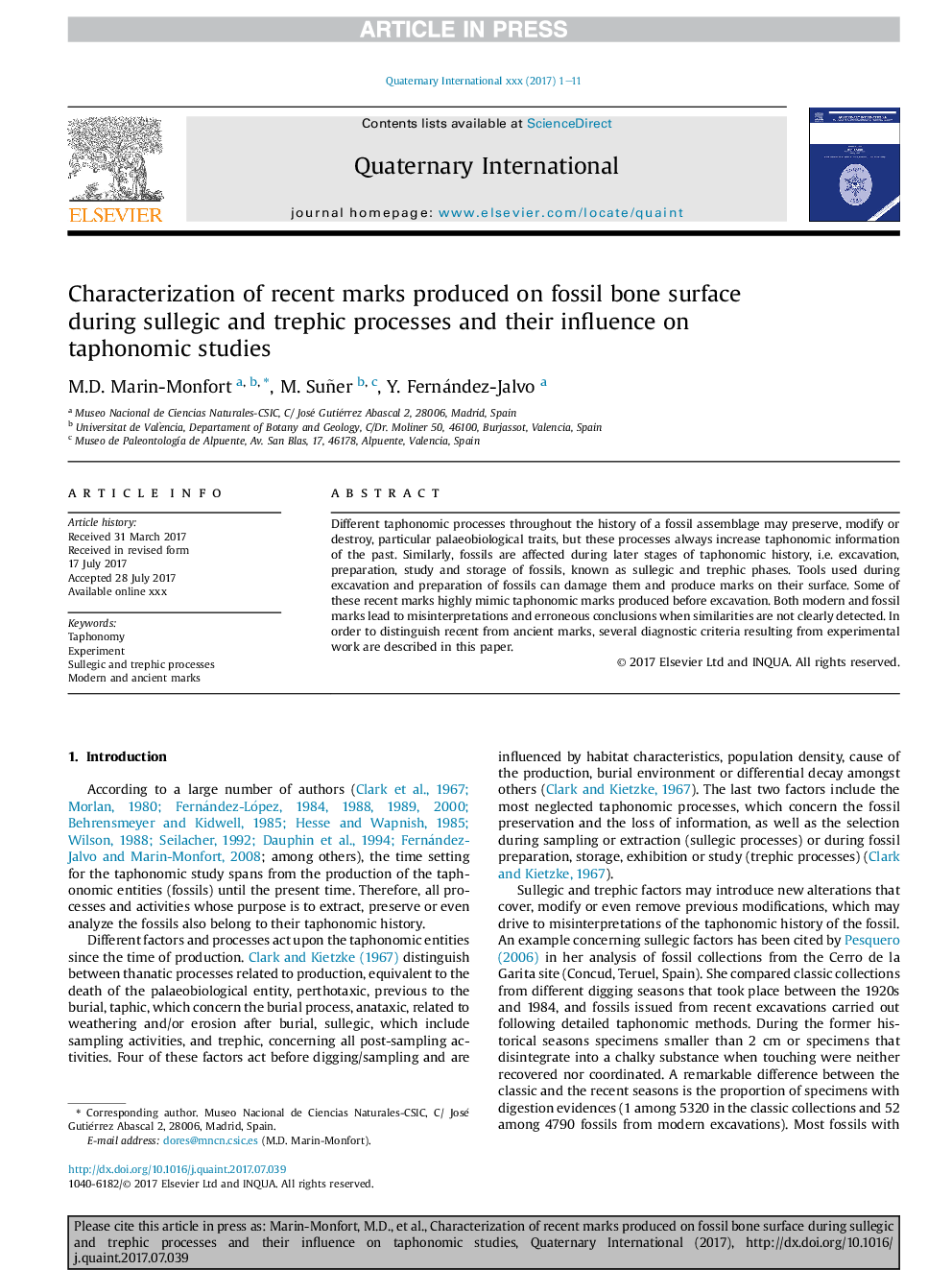| Article ID | Journal | Published Year | Pages | File Type |
|---|---|---|---|---|
| 7449219 | Quaternary International | 2018 | 11 Pages |
Abstract
Different taphonomic processes throughout the history of a fossil assemblage may preserve, modify or destroy, particular palaeobiological traits, but these processes always increase taphonomic information of the past. Similarly, fossils are affected during later stages of taphonomic history, i.e. excavation, preparation, study and storage of fossils, known as sullegic and trephic phases. Tools used during excavation and preparation of fossils can damage them and produce marks on their surface. Some of these recent marks highly mimic taphonomic marks produced before excavation. Both modern and fossil marks lead to misinterpretations and erroneous conclusions when similarities are not clearly detected. In order to distinguish recent from ancient marks, several diagnostic criteria resulting from experimental work are described in this paper.
Keywords
Related Topics
Physical Sciences and Engineering
Earth and Planetary Sciences
Geology
Authors
M.D. Marin-Monfort, M. Suñer, Y. Fernández-Jalvo,
